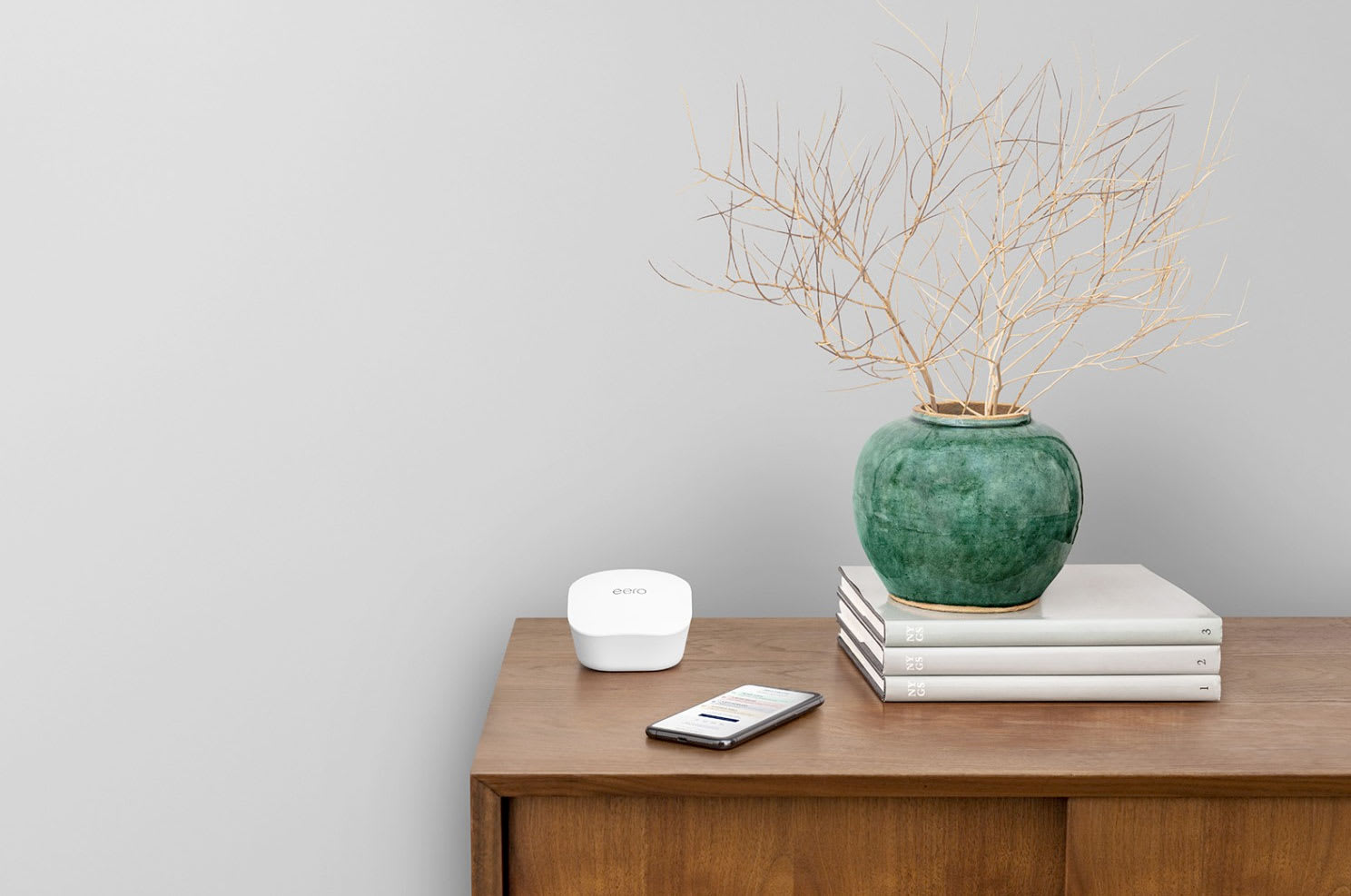Tag Archives: mesh network
Qualcomm’s next-gen mesh network tech supports palm-sized routers
Amazon’s new Eero mesh routers support WiFi 6
Amazon’s new Eero mesh WiFi system is all about ease of use
 You'd be forgiven for not knowing Amazon acquired the mesh-networking outfit Eero earlier this year; routers are less than thrilling by nature, and the deal's potential was less exciting than the problems it caused for existing employees. Amazon was...
You'd be forgiven for not knowing Amazon acquired the mesh-networking outfit Eero earlier this year; routers are less than thrilling by nature, and the deal's potential was less exciting than the problems it caused for existing employees. Amazon was...
Duracell Powermat adding mesh network, scaleable power to its wireless charging plates
Duracell Powermat is announcing a pair of new features to encourage sales of its wireless charging gear. The first is "Mesh Network," a set of controls that let multiple hotspots be centrally monitored -- so if you're stealing all the juice in the Wall St. Starbucks, central office can cut you off. On the upside, those same network features will enable you to find another charging hotspot on your smartphone, including Madison Square Garden and Jay-Z's 40/40 club. The second feature is that the latest mats will be able to vary the power on offer between 5 and 50 watts, making them capable of recharging smartphones, tablets and (potentially) Ultrabooks. Now all we have to do is work out how to power all of our electronics without arousing the suspicions of Jay-Z -- we'd hate to add a 100th problem to his worry list.
Filed under: Cellphones, Wireless
Sandia Labs’ MegaDroid project simulates 300,000 Android phones to fight wireless catastrophes (video)
We've seen some large-scale simulations, including some that couldn't get larger. Simulated cellular networks are still a rare breed, however, which makes Sandia National Laboratories' MegaDroid project all the more important. The project's cluster of off-the-shelf PCs emulates a town of 300,000 Android phones down to their cellular and GPS behavior, all with the aim of tracing the wider effects of natural disasters, hacking attempts and even simple software bugs. Researchers imagine the eventually public tool set being useful not just for app developers, but for the military and mesh network developers -- the kind who'd need to know how their on-the-field networks are running even when local authorities try to shut them down. MegaDroid is still very much an in-progress effort, although Sandia Labs isn't limiting its scope to Android and can see its work as relevant to iOS or any other platform where a ripple in the network can lead to a tidal wave of problems.
Filed under: Cellphones, Wireless, Mobile, Alt, Google
Sandia Labs' MegaDroid project simulates 300,000 Android phones to fight wireless catastrophes (video) originally appeared on Engadget on Wed, 03 Oct 2012 17:24:00 EDT. Please see our terms for use of feeds.
Permalink New York Times |
New York Times |  Sandia National Laboratories | Email this | Comments
Sandia National Laboratories | Email this | Comments 
